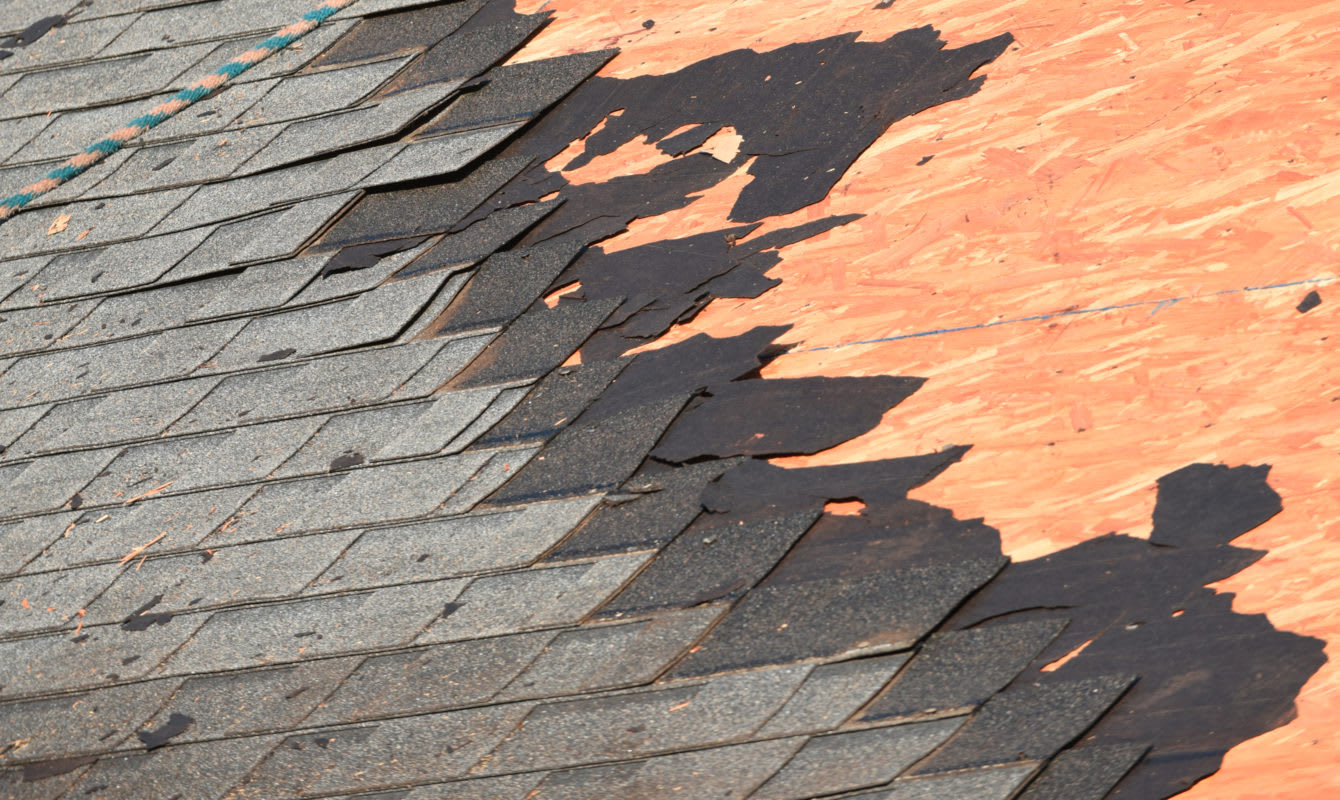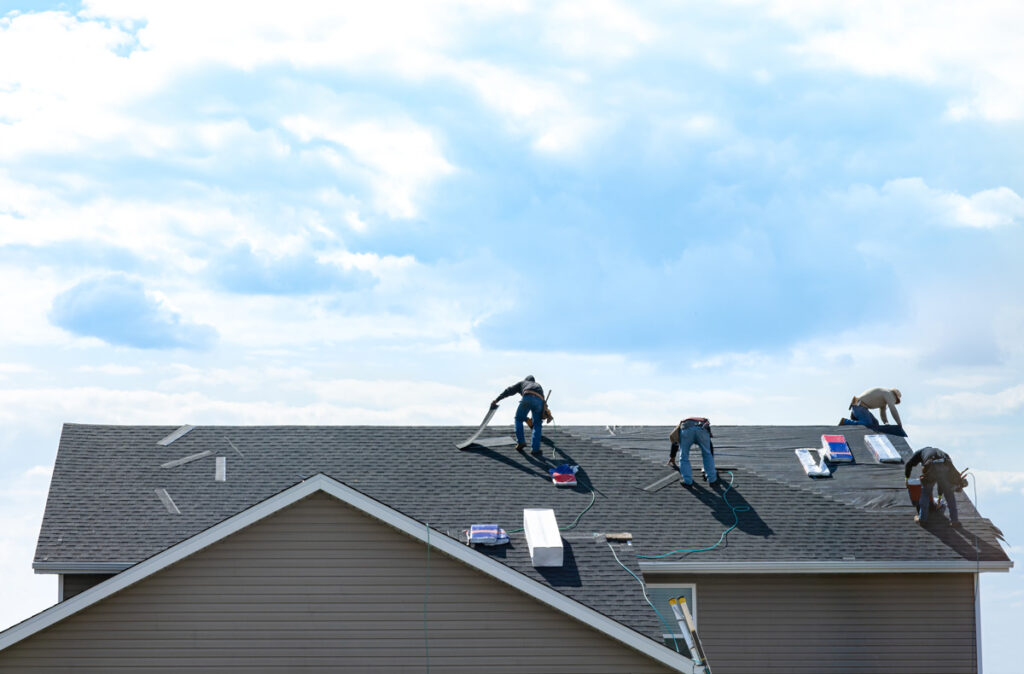Roof Repair Oahu: Quick and Affordable Roof Fixes Near You
Roof Repair Oahu: Quick and Affordable Roof Fixes Near You
Blog Article
Recognizing the Various Sorts Of Roofing Systems: A Comprehensive Guide for Homeowners
With an array of alternatives-- ranging from the standard gable to the contemporary level-- each type presents special benefits and challenges that need to straighten with the homeowner's details needs and ecological considerations. As we explore the details of numerous roof covering types, it comes to be obvious that one size does not fit all; the ideal option might shock you.
Gable Roofing Systems
Saddleback roofs, identified by their triangular form, are among one of the most popular roof styles because of their simpleness and efficiency in losing water and snow. This design includes 2 sloping sides that meet at a ridge, enabling efficient drain and minimizing the threat of water build-up. The high pitch commonly connected with gable roofs improves their ability to manage hefty precipitation, making them appropriate for numerous environments.
Along with their useful advantages, gable roof coverings provide visual adaptability. They can be adjusted to numerous architectural styles, from typical to contemporary homes. The style can additionally suit added features such as dormer home windows, which boost all-natural light and air flow in the attic area.
Moreover, gable roofing systems supply enough space for insulation, adding to energy effectiveness. Home owners can select from a variety of roofing materials, including asphalt roof shingles, metal, and ceramic tiles, additionally improving modification alternatives.
Regardless of their benefits, saddleback roofs might call for added assistance in locations vulnerable to high winds or hefty snowfall. Generally, the saddleback roof continues to be a popular option because of its blend of performance, toughness, and aesthetic charm.
Flat Roofs
Flat roofs are often recognized for their minimal layout and functional applications, particularly in commercial and commercial settings (oahu roofing). These roofs include a virtually straight or horizontal surface, which enables easy construction and functional area usage. While they might do not have the aesthetic allure of pitched roof coverings, flat roofs offer many advantages, especially in city atmospheres where maximizing area is important
Among the primary advantages of flat roofs is their access. Property owners can utilize the roofing space for different functions, such as roof gardens, terraces, or photovoltaic panel setups. In addition, level roofing systems are commonly much more affordable to maintain and install compared to their sloped counterparts, as they require fewer materials and labor.
Common materials used for flat roofing systems include built-up roof (BUR), changed asphalt, and single-ply membrane layers, each offering distinctive advantages. On the whole, level roof coverings offer as a useful and adaptable selection for several homeowners and companies alike.
Hip Roofing Systems
Hip roofing systems are defined by their sloped sides that assemble at the top, forming a ridge. This design stands out from gable roofs, as all four sides of a hip roof incline downwards towards the walls, offering a more stable framework. The angle of the inclines can vary, permitting flexibility in architectural aesthetic appeals and performance.
One of the key benefits of hip roofing systems is their ability to endure heavy winds and adverse climate conditions. The sloped surfaces make it possible for much better water drainage, reducing the threat of leaks and water damages. In addition, hip roofing systems offer raised attic room space, which can be made use of for storage or perhaps transformed into comfortable areas.
Nonetheless, building a hip roof can be extra complicated and costly than less complex roofing system kinds, such as saddleback roofs. The additional material and labor involved in producing the slopes and making certain proper architectural integrity can bring about greater expenditures. Despite these downsides, numerous home owners favor hip roofings for their resilience, aesthetic appeal, and capacity for power performance.
Mansard Roofs
Mansard roofing systems, usually acknowledged by their one-of-a-kind four-sided style, attribute two slopes on each side, with the reduced incline being steeper than the upper. This architectural style, stemming from France in the 17th century, is not just aesthetically attractive yet functional, as it maximizes the functional area in the top floorings of find more information a building. The steep lower slope enables even more clearance, making it a perfect option for loft spaces or attic rooms, which can be converted into living spaces.
Mansard roofing systems are defined by their convenience, suiting various architectural styles, from conventional to contemporary. They can be built with different materials, including asphalt roof shingles, slate, or steel, supplying home owners with a variety of alternatives to match their budgets and preferences. Furthermore, the style permits the integration of dormer windows, boosting all-natural light and air flow in the top levels.
Nevertheless, it is necessary to think about the prospective disadvantages. Mansard roofing systems may require even more upkeep because of the complexity of their layout, and their steep slopes can be testing for snow and rainfall overflow. In general, mansard roofing systems combine elegance with practicality, making them a popular selection amongst home owners seeking distinctive building functions.
Dropped Roofing Systems
As homeowners significantly look for simplicity and capability in their building designs, lost roofings have become a prominent choice. Identified by a single sloping aircraft, a shed roofing presents a minimal aesthetic that enhances different home styles, from modern to rustic.
Among the primary advantages of a shed roof covering is its simple building and construction, which typically converts to lower labor and material prices. This design permits reliable water drainage, decreasing the threat of leakages and water damage. Furthermore, the upright incline offers adequate room for skylights, enhancing natural light within the interior.
Lost roofs likewise use convenience in terms of usage. They can be successfully incorporated right into enhancements, garages, or outdoor structures like sheds and pavilions. In addition, this roof style can accommodate different roof products, consisting of steel, asphalt tiles, or even eco-friendly roofing systems, lining up with green initiatives.
However, it is necessary to think about regional climate problems, as heavy snow loads may demand adjustments to the roof's angle or framework. In general, lost roofings offer a practical and visually pleasing choice for property owners seeking to maximize capability without endangering design.
Final Thought


Gable roofs, defined by their triangular form, are among the most prominent roof covering styles due to their simplicity and performance in shedding water and snow. my blog oahu roofing. The steep pitch generally associated with gable roofing systems boosts their ability to deal with hefty rainfall, making them ideal for different climates
While they may do not have the visual allure of pitched roofing systems, level roof coverings offer various site benefits, particularly in metropolitan environments where taking full advantage of space is vital.

Report this page